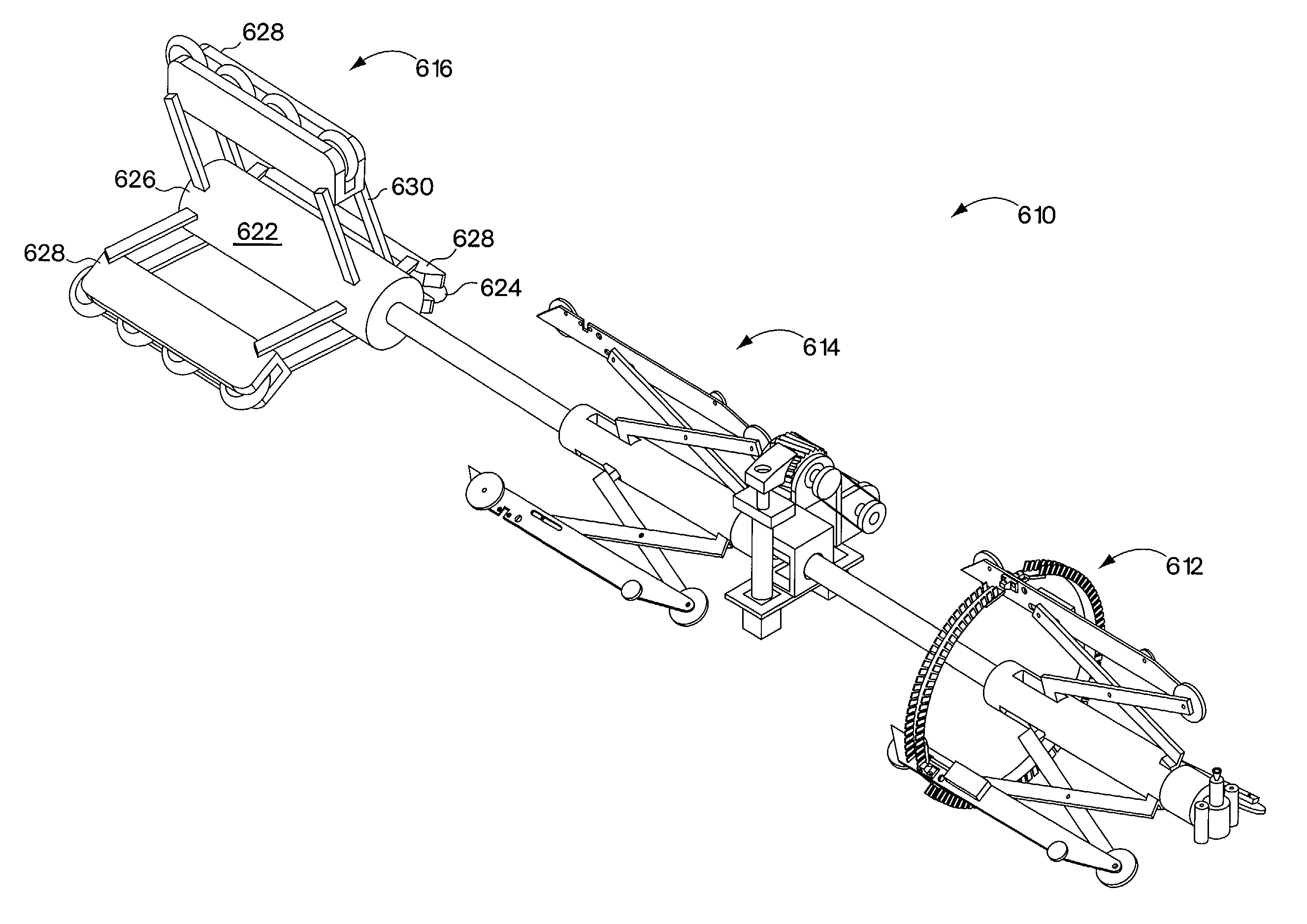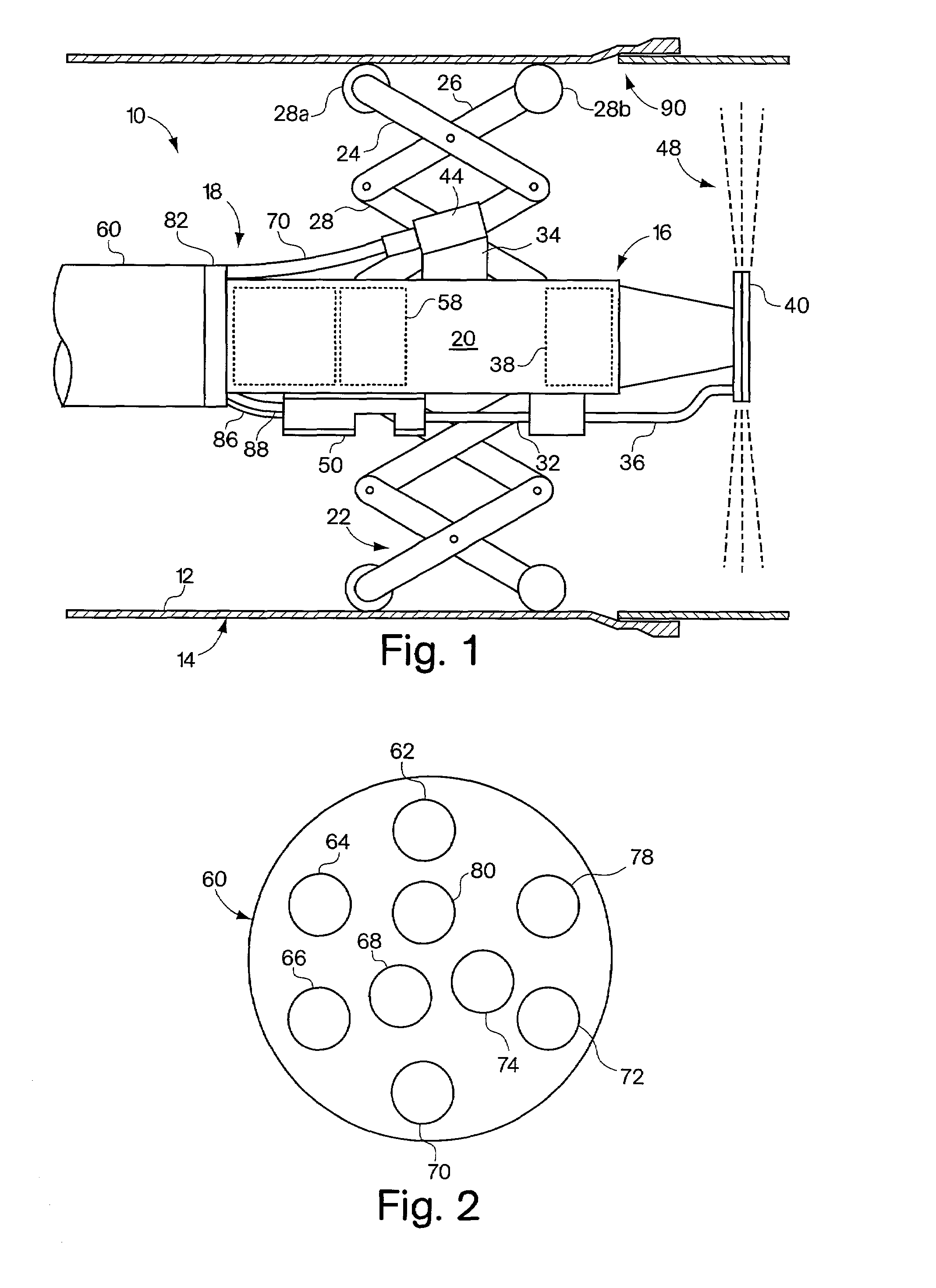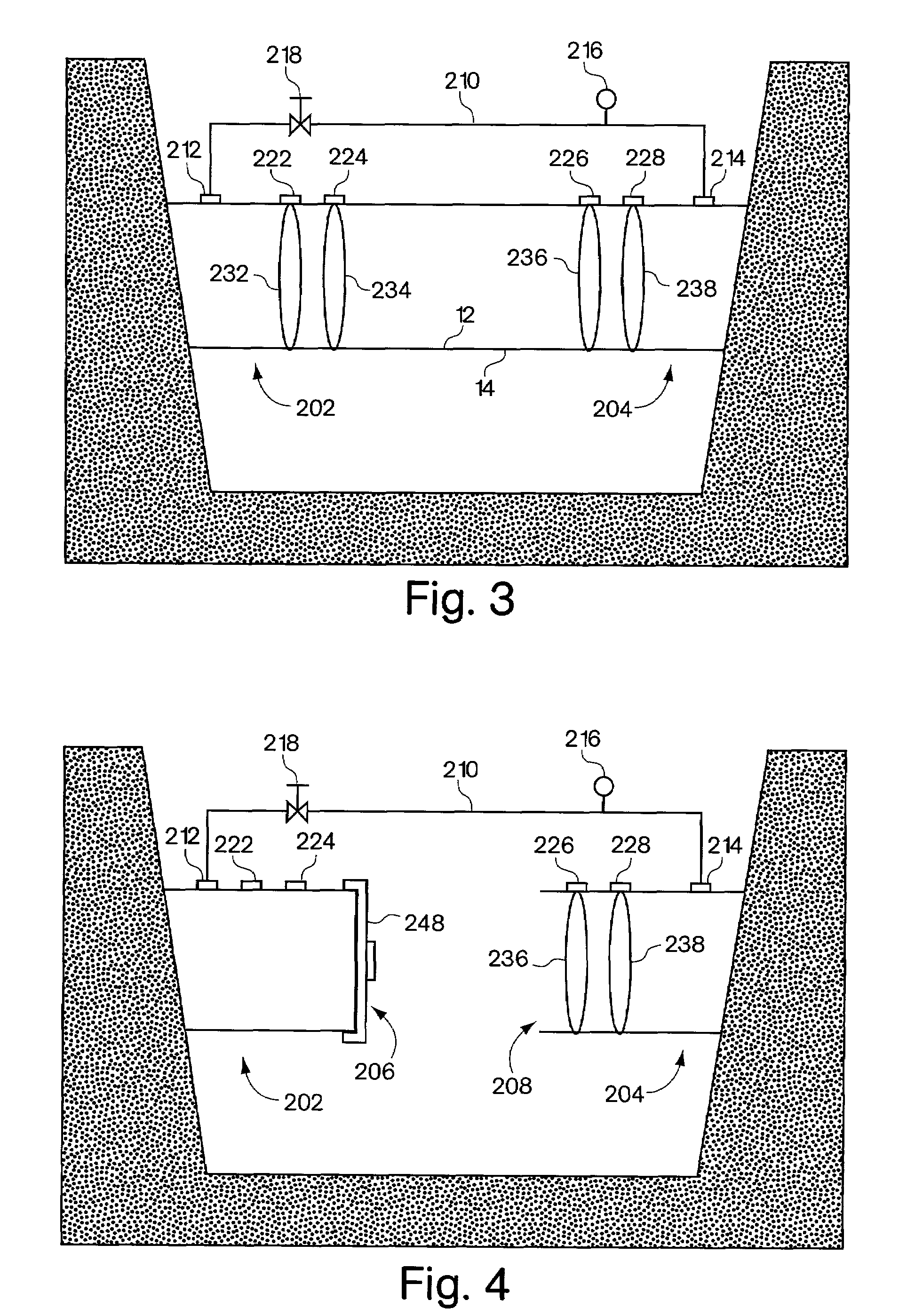Method and apparatus for treating underground pipeline
a technology for underground pipelines and apparatuses, applied in the direction of superimposed coating processes, liquid/solution decomposition chemical coatings, manufacturing tools, etc., can solve the problems of gas leakage at the pipe joints, only temporary preventative procedures, and dilemma in the gas and gas transportation industry, so as to reduce the loss of natural or propane gas and the effect of convenient operation
- Summary
- Abstract
- Description
- Claims
- Application Information
AI Technical Summary
Benefits of technology
Problems solved by technology
Method used
Image
Examples
Embodiment Construction
[0063]One embodiment of the present invention will now be described with reference to FIGS. 1–12. Referring now to FIG. 1, a coating device, generally designated by numeral 10, is shown located resting on an inside surface 12 of a pipe 14. The coating device 10 is provided with a centering carriage 20. The centering carriage 20 has a front end 16 and a rear end 18. A manifold 82 is attached to the rear end 18. A containment tube 60 is shown attached to manifold 82. An air motor 38 is mounted inside the front end 16 of centering carriage 20. Air motor 38 turns a rotating slotted head 40. A static mixer 50 is fixed to the side of centering carriage 20. Individual coating material components are sent to the static mixer 50 through intake tubes 86 and 88 where they are thoroughly mixed to produce a coating material 48. The coating material 48 is then sent through an outlet tube 32 where it is forced into a spray tip 36. Spray tip 36 then meters an appropriate amount of coating material ...
PUM
| Property | Measurement | Unit |
|---|---|---|
| diameter | aaaaa | aaaaa |
| diameter | aaaaa | aaaaa |
| temperature | aaaaa | aaaaa |
Abstract
Description
Claims
Application Information
 Login to View More
Login to View More - R&D
- Intellectual Property
- Life Sciences
- Materials
- Tech Scout
- Unparalleled Data Quality
- Higher Quality Content
- 60% Fewer Hallucinations
Browse by: Latest US Patents, China's latest patents, Technical Efficacy Thesaurus, Application Domain, Technology Topic, Popular Technical Reports.
© 2025 PatSnap. All rights reserved.Legal|Privacy policy|Modern Slavery Act Transparency Statement|Sitemap|About US| Contact US: help@patsnap.com



